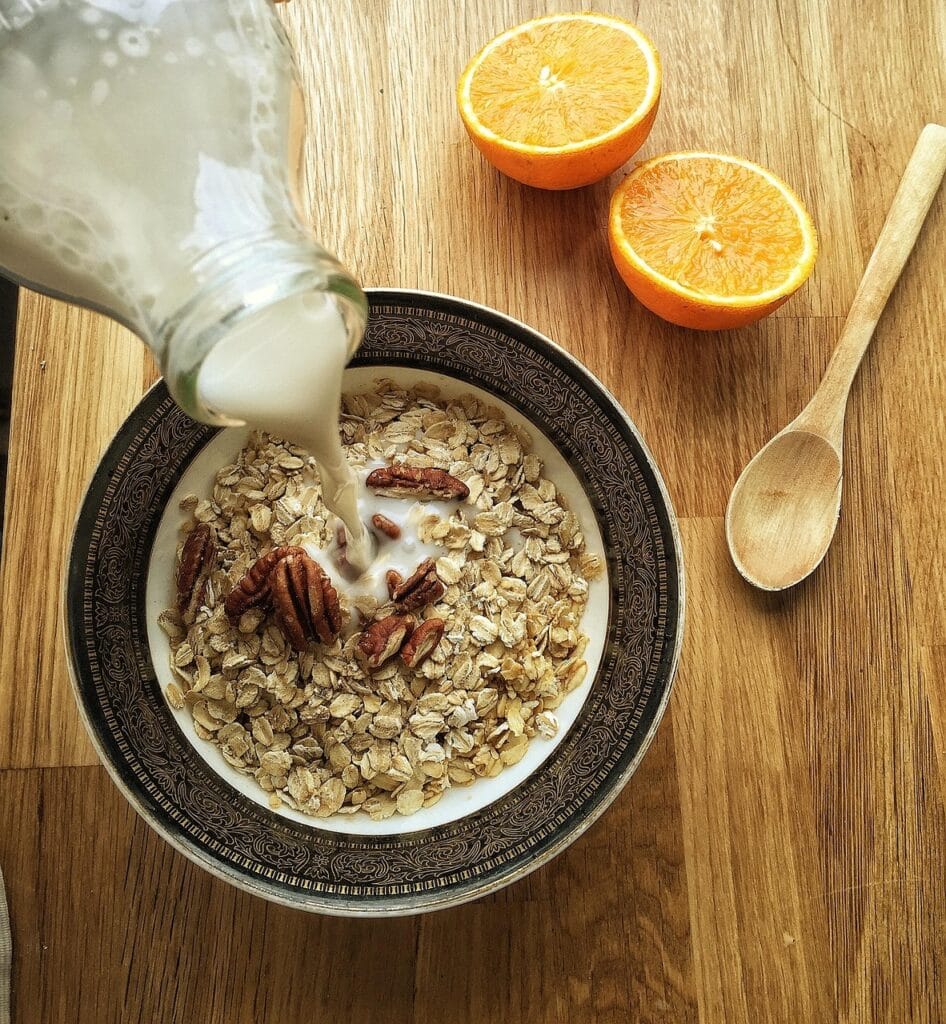FREE SHIPPING OVER $50
Is Your Oat Milk Spiking Your Blood Sugar? What Experts Say Might Surprise You

Oat milk has become the undisputed champion of plant-based dairy alternatives. Walk into any coffee shop, and you’ll see it frothing up lattes; peek into a healthy pantry, and you’ll find a carton. It’s widely celebrated as a healthy, environmentally conscious choice—a creamy, satisfying addition to your morning ritual. But there’s a quiet conversation happening among nutrition experts that you absolutely need to hear: Is your oat milk spiking your blood sugar?
The surprising answer, according to many experts and scientific data, is a definite yes. For a food celebrated for its natural ingredients, oat milk harbors a secret that could be actively undermining your weight loss, energy levels, and long-term health. Understanding the simple science behind how oats are turned into milk reveals why this beloved beverage might be causing rapid blood sugar surges that contribute to energy crashes and, yes, that stubborn belly fat. Let’s dive into what experts say might truly surprise you about your favorite dairy alternative.
The Process Problem: Why Oats Become Sugar
To grasp the blood sugar impact of oat milk, you must first understand how it’s made. While raw, whole oats are a fantastic source of slow-digesting, complex carbohydrates and fiber, the process of turning them into a smooth, creamy liquid fundamentally changes their nutritional profile.
Manufacturers use enzymes (a process called enzymatic hydrolysis) to break down the starches in the oats. This crucial step is what creates the sweet flavor and creamy texture we love, but it also converts the complex starches into simple sugars, primarily maltose. Maltose has a very high glycemic index (GI)—even higher than table sugar. This means that when you drink oat milk, you are consuming readily available simple sugars that hit your bloodstream fast, often causing a spike in blood sugar that can rival sugary sodas. For those focusing on nutrition and stable energy, this rapid glucose delivery is highly counterproductive.
The Glycemic Reality: Comparing Oat Milk to Alternatives
The glycemic index (GI) measures how quickly a food raises blood sugar. Foods with a high GI are the ones experts caution against for those concerned with insulin resistance or weight loss.
| Beverage | Primary Carbs/Sugar Type | Typical Glycemic Index (GI) Estimate |
| Oat Milk (Standard) | Maltose (Enzymatic Sugar) | 60–65 |
| Almond Milk (Unsweetened) | Fiber/Fats (Very Low) | 25–30 |
| Whole Milk | Lactose (Dairy Sugar) | 30–35 |
| Soda/Coke | High Fructose Corn Syrup | 63 |
As you can clearly see, standard oat milk pushes the boundaries of a healthy GI score, moving dangerously close to the levels of pure sugar. This quick blood sugar surge requires your pancreas to pump out large amounts of insulin, the hormone that quickly moves that glucose out of your blood. Repeated, large insulin dumps are a direct driver of weight gain and insulin resistance.
What Experts Say: The Hidden Costs of the Sugar Spike
Nutrition professionals highlight several critical ways this constant blood sugar roller coaster sabotages your health and fitness goals.
1. The Energy Crash and Cravings Cycle
The rapid spike and subsequent crash of blood sugar are what cause that familiar mid-morning slump. Your body, having cleared the glucose, then signals an urgent need for more energy, triggering intense carbohydrate cravings. This cycle makes mindful nutrition difficult and leads to increased overall calorie consumption throughout the day, directly working against any weight loss efforts.
2. Visceral Fat Storage
Insulin’s primary job is to deal with excess glucose. When faced with continuous sugar spikes from foods like oat milk, the body increases its fat storage mechanisms, particularly targeting visceral fat (the deep, active fat around the organs). Experts say that visceral fat is highly inflammatory and is strongly linked to chronic disease risk. Therefore, that innocent splash of oat milk in your coffee could be actively fueling the storage of the most dangerous kind of fat.
3. Nutrient Displacement
Unlike almond milk or soy milk, oat milk naturally contains very little protein or healthy fats. Protein and fat are the two macronutrients that slow digestion and stabilize blood sugar. When you choose oat milk for your morning coffee or cereal, you are displacing a more stabilizing alternative with a carb-heavy liquid that lacks the structural components needed for sustained satiety. This lack of balance undermines your overall nutrition.
The Fix: Smart Hacks to Keep Oat Milk in Your Diet
If you love oat milk and simply cannot part with its texture, experts agree that you can still enjoy it—but you must use smart hacks to mitigate its negative blood sugar effects.
1. Go for the “Unsweetened Full-Fat” Versions
Always choose oat milk that is explicitly labeled “Unsweetened.” This eliminates any added sugars. Furthermore, look for oat milk that contains a small amount of added fat (like rapeseed or sunflower oil). Fat is the key stabilizer; it slows down the stomach emptying process and blunts the spike from the inherent maltose, creating a gentler blood sugar curve.
2. Pair It With Protein and Fiber
Never drink oat milk on an empty stomach or consume it alone. Nutrition experts advise pairing any potentially high-glycemic food with protein and fiber to reduce its impact.
- In Coffee: Add a scoop of collagen peptides or protein powder to your coffee alongside the oat milk splash.
- With Cereal: Ensure your cereal is extremely high in fiber (over 5 grams per serving) and add a handful of nuts or seeds to the bowl.
3. Use it Sparingly (The “Splash Rule”)
Limit your consumption to a small amount—a “splash” or two in your coffee. If you are drinking large quantities (i.e., making a smoothie or drinking a whole bowl of cereal with oat milk), you are dramatically increasing the total sugar load, making it difficult for your body to manage the subsequent blood sugar spike. Consider using a lower-carb alternative like unsweetened almond or macadamia milk for larger-volume consumption.
Conclusion
The conversation about oat milk is a powerful reminder that “natural” doesn’t always mean low-sugar, especially when it comes to processed foods. The reality is that for those prioritizing stable blood sugar, sustained energy, and weight loss, the high maltose content in many oat milk varieties is a significant drawback.
Experts say that awareness and strategic pairing are the keys to a healthy nutrition plan. If you choose to enjoy oat milk, opt for unsweetened, full-fat versions and always balance it with protein and fiber. By implementing these simple hacks, you can continue to enjoy the creamy texture you love while ensuring your favorite drink is a friend, not an enemy, to your overall health goals.
Related Articles
- Can You Put Hot Food Straight in the Fridge? Here’s What Most People Get Wrong
- Eat Almonds Daily? Here’s What Happens to Your Skin, Heart, and Brain—Backed by Science
- The ‘Healthy’ Food Nutritionists Regret Recommending—It’s Worse Than a Drive-Thru Burger
- 15 Detox Foods That Help Your Liver Flush Microplastics—Backed by Environmental Health Experts
- Men Over 50: Eat These 10 Protein-Packed Foods Daily to Stay Strong, Lean, and Energized



